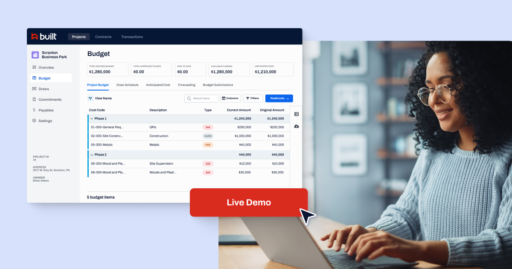Four Commercial Real Estate Sectors to Watch in 2023

On This Page
As we near the end of 2022, there’s no denying that inflation, rising interest rates, supply/labor shortages, and overall economic uncertainty have all impacted commercial real estate (CRE). Despite these formidable headwinds, and the resulting negativity currently surrounding the overall real estate market, there are many indicators of strong tailwinds for CRE going into 2023. Historically, CRE stands up well during times of rising interest rates. Furthermore, a healthy job market, high liquidity provided by the agencies, and strong balance sheets give CRE good momentum in the coming year.
However, with multiple factors at play in the post-pandemic world–such as a severe lack of affordable housing, a shift to remote and hybrid work, and a boom in e-commerce–some CRE sectors are poised to perform better than others. Below are our picks for the top CRE sectors to watch in 2023.
Industrial
As demand for traditional brick-and-mortar retail falters in the wake of the pandemic, e-commerce continues to boom. Companies are looking to build more distribution centers and warehouses to meet heavy shipping requirements resulting from the recent explosion of e-commerce. According to a report from CBRE, “digital-impacted sales are forecast to total more than $2.4 trillion and account for more than 58% of total retail sales by 2023.” Such rapid growth brings into question whether e-commerce will eventually replace physical retail altogether. Although this is impossible to predict, analysts remain bullish as industrial real estate continues to outperform all other CRE sectors in 2022. In fact, in their October 2022 Commercial Market Insights Report, the National Association of Realtors states, “Demand is very strong [for industrial CRE] as net absorption was nearly 425 million sq. ft. in the last 12 months ending in Q3 2022. Although demand may have tapered, the volume of industrial space absorbed continues to be double that of pre-pandemic times. As a result, this sector had the lowest vacancy rate at 4% of any other sector in the commercial real estate market. At 11.8% year-over-year, U.S. industrial rent growth remains near historic highs.”
An interesting trend emerging in the industrial CRE sector is the increased demand for flexible space that serves as both office buildings and warehouse facilities. Flex spaces allow businesses to operate more efficiently by housing business operations in a single facility. With waning demand for traditional office space, investors can take advantage of lower office real estate prices and repurpose it to provide high-demand flex space.
Multifamily
Despite cooling housing prices, many would-be homebuyers are still priced out of the market due to rising mortgage interest rates, which currently hover above 7%. Further exacerbating the situation is the fact that affordability continues to worsen as inflation, which remains at near forty-year highs, outpaces annual wage growth. While single-family home starts recently fell to their lowest levels in over two years, demand for multifamily housing remains strong–second only to the industrial CRE sector. Large projects geared toward solving low- to middle-income housing supply shortages have become more prevalent. In fact, the U.S. Census Bureau recently reported a 16.5% in multifamily starts (5+ units) since September 2021.
As buyers continue to be pushed out of the single-family market, rent growth is widely predicted to remain strong–making multifamily an attractive investment. In a recent forecast, The Federal Reserve Bank of Dallas predicts year-over-year rent will continue to rise at a rate of 8.4%, finally moderating around mid-2023. While the year-over-year cost of rent dipped slightly in August and September, it’s important to keep in perspective that this comes hot off the heels of an unprecedented 22.8% increase over the last two years. According to Redfin’s September Rental Report, “The median rent for 1-bedroom units was $1,647, down by $6 compared to last month and $18 less from the peak. However, it is still up by $117 (7.7%) compared to the previous year and 23.0% ($308) higher since September 2020.”
Flexible Working Spaces
The remote and hybrid work movement has become a struggle for power between workers and management–with valid points to be made for each side. Regardless of where you fall on the issue, there’s no denying that office real estate is changing. Since the beginning of the pandemic, there has been a rise in office vacancies in the most prominent metro areas across the United States. According to a report from CoStar analyzing office vacancy rates in 139 metro areas, nearly 75% have a higher office vacancy rate than before the pandemic. In Q3 2022, the office CRE sector sits at a 12.4 vacancy rate–the highest of all of the CRE sectors.
Just as e-commerce changed the traditional retail landscape, flexible workspaces are primed to disrupt the office CRE sector. It’s clear that workers are reluctant to return to a traditional office setting. By leveraging what worked well in traditional office spaces and incorporating the flexibility and amenities that working from home provides, flexible working spaces are not only a great compromise for workers, but also more attractive from an investment standpoint. Flexible workspaces are specifically designed to be modular–easily accommodating structural changes and quickly adapting to fit teams of any size. Flexible working spaces typically also provide workers with a more open working environment that encourages collaboration. As mentioned above, another benefit of flexible working spaces is the ability to serve double duty as a warehousing facility–allowing investors to hedge against the waning demand of the office CRE sector.
It seems investors are taking notice of this opportunity. Earlier this year, CBRE conducted an Occupier Sentiment Survey–where nearly a quarter of respondents reported having more than 10% of their real estate portfolios in flexible office space. Over 50% of respondents expect to have flexible office space account for more than 10% of their real estate portfolios in the next two years. Furthermore, 18% of large companies who participated in the survey anticipate “very significant” growth (>50% of portfolio) in flexible office space over the next two years.
Digital Infrastructure
The shift to remote work and boom in e-commerce has forced companies to adopt digital technology and services–otherwise known as digital transformation. Digital infrastructure is the backbone that supports digital transformation–enabling everything from video conferencing to online payments, granting us connection and the digital conveniences that we’ve become accustomed to. The term digital infrastructure includes physical constructs such as data centers, cellular towers, and fiber optic cables to name a few. It has quickly become clear that digital infrastructure is as essential to the economy as any other sector of CRE.
The rapid shift toward digital transformation has resulted in significant demand for digital infrastructure to accommodate the explosion of network traffic. Data from Synergy Research Group indicates that “Q3 2021 enterprise spending on cloud infrastructure services passed the $45 billion mark, up 37% from the third quarter of 2020.” They go on to report that Amazon, Microsoft, and Google contribute to well over half of worldwide cloud spending–a strong indicator of the increased demand for cloud computing. Furthermore, $2.8 billion of the White House’s $2 trillion infrastructure spending plan has been allocated to digital infrastructure. And, the U.S. isn’t alone in planning for a digital future–nearly every country in the world has a digital strategy in place to compete in today’s global market.
The Future of CRE
Despite the fear, negativity, and uncertainty currently surrounding the real estate market as a whole, the future of CRE remains optimistic. Although the pandemic has permanently changed the CRE landscape, exciting new opportunities are opening up for investors, builders, and lenders alike. We believe the most successful CRE sectors will be those that embrace and complement the new post-pandemic world. The future of CRE is bright, and we’re excited to see where it goes next.
How can CRE lenders can reduce risk?
Economic uncertainty. Inflation. Rising interest rates. There are some risk factors that can’t be controlled. Built’s solutions are designed specifically to empower CRE lenders to manage the risk they can control. We offer a variety of intuitive digital solutions to help lenders mitigate risk and boost efficiency on every CRE project.
- Easily access the inspection & pre-close data you need from CRE consultants you can trust.
Leverage Built’s CRE Inspections Technology & Services to connect with qualified CRE consultants, easily schedule inspections, share and manage files, and receive construction progress results sooner in an executive summary report–all within a single platform, so you can facilitate faster draws, improve service levels, and generate efficiencies while mitigating risk. - Don’t wait for CRE project issues to arise—monitor & prevent them proactively.
With Built’s Project Pro, you’ll gain access to upfront reviews and ongoing monitoring of contractors, daily project monitoring, and proactive risk alert tracking–all presented within the context of your project, offering an unmatched user experience and providing centralized access to important information, where and when you need it. - Unlock digital CRE deal management.
CRE lenders have long been underserved by a lack of modern, industry-specific tools to make better deal decisions. With Built’s digital Deal Management solution, you can effectively deliver ROl quickly & easily with increased collaboration, visibility, and speed.
Chat with an expert today and discover how you can transform your CRE lending experience.







